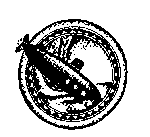|
Many of the books are about volcanoes. Volcanoes
are connected to convection in the following way: The earth’s
crust is fractured into large segments called tectonic plates
that move slowly, driven in part by convection currents in the
magma they float on. Most volcanoes occur in the places where
these big plates collide, rub together or separate.
Books about earthquakes could be connected in the same way, but
we haven’t found any.
Look for stories in which convection currents in water or air
play a part, including books about sailboats, gliders, or birds.
We found two books, one about kites (wind is caused by convection),
and another about heat transfer and air conditioning.
Catch the Wind: All About Kites
A Chilling Story: How Things Cool Down
Hill of Fire
Magic Dogs of the Volcanoes
The Magic School Bus Inside the Earth
Paul’s Volcano
Volcano: The Eruption and Healing of Mount
St. Helens
Catch the Wind: All About Kites
by Gail Gibbons
Little, Brown & Co., Boston. 1989
Grades: K–6
When two children visit Ike’s Kite Shop they learn about
kites and how to fly them. Instructions for building a kite are
given. The book relates especially to “Going Further”
activities in which students do a thought experiment to determine
where the best hang-gliding spot would be.
Return to title list.
A Chilling Story: How Things Cool Down
by Eve and Albert Stwertka; illustrated by Mena Dolobowsky
Julian Messner/Simon & Schuster, New York. 1991
Grades: 4–8
Refrigeration and air conditioning are simply explained, with
sections on heat transfer, evaporation, and expansion. Humorous
black and white drawings show a family and its cat testing out
these principles in their home.
Return to title list.
Hill of Fire
by Thomas P. Lewis; illustrated by Joan Sandin
Harper & Row, New York. 1971
Grades: 2–5
A Mexican villager plowing a field opened up a crack in the
earth that erupted within days into a new volcano, Paricutin.
While told in simple language, the story is still appropriate
for older students who are studying volcanoes and the concept
of convection. The power of the volcano and the impact of change
are strongly conveyed. The actual 1943 event is described in a
historical note. This was only the second time in recorded history
that the birth of a volcano has been directly witnessed by humans.
Return to title list.
Magic Dogs of the Volcanoes
by Manlio Argueta; illustrated by Elly Simmons
Children’s Book Press, San Francisco. 1990
Grades: 1–4
When the traditional magic dogs who protect the people of
El Salvador, and who live on top of ancient volcanoes, are pursued
by soldiers, the volcanoes play a trick. The male volcano fans
himself with his steam hat, making the earth hot. The female volcano
shakes her dress made of water and makes the soldiers wet so they
sizzle and melt. This is an imaginative, multicultural extension
to GEMS activities which introduce convection as one of the forces
that contribute to volcanic eruption. Text in English and Spanish.
Return to title list.
The Magic School Bus Inside the Earth
by Joanna Cole; illustrated by Bruce Degen
Scholastic, New York. 1987
Grades: K–6
On a special field trip to the center of the earth, Ms. Frizzle’s
class learns firsthand about different kinds of rocks and the
formation of the earth and its structure. Reading this book would
be a good introductory way for interested students to continue
exploring topics touched on by the GEMS convection activities,
and to begin learning more about the different geological layers
and forces at work inside the Earth.
Return to title list.
Paul’s Volcano
by Beatrice Gormley; illustrated by Cat B. Smith
Avon Books, New York. 1987
Grades: 5–8
When Adam and Robbie see Paul’s science fair project,
a model of a volcano (complete with smoke and eruption sound track),
they decide that it must become the symbol of their new club.
The “Vulcans” conduct rituals with the model volcano,
chanting their password “Magma, Magma” as they prepare
to march in the July 4th parade. But mysterious, dangerous forces
seem to be at work. What begins as a playful imitation of legends
about people sacrificed to volcanoes turns into a series of unexplained
and bizarre events, fear, and a final conflagration. Qualities
of leadership and the meaning of accomplishment are explored as
the strange events surge like lava down a mountainside. There
is some scientific information throughout, including a description
of the eruption of Mount St. Helens. In the end, the spirit of
friendship triumphs over the evil genie of the volcano.
Return to title list.
Volcano:
The Eruption and Healing of Mount St. Helens
by Patricia Lauber
Bradbury Press, New York. 1986
Grades: 4–7
Photographic account of how and why Mount St. Helens erupted
in May 1980 and the destruction it caused. Two chapters discuss
the survivors and colonizers, and the plant and animal life that
returned to the area. Dormant volcanoes and their mechanics are
explained in Chapter 5 with a positive look at the creative effects
of an eruption. Although convection is not referred to directly,
Chapter 5 includes a good basic introduction to the key topic
of plate tectonics.
Return to title list.
|


